What is a Partial Denture?
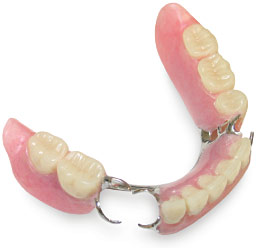 Removable partial dentures usually consist of replacement teeth attached to pink or gum-colored plastic bases. Depending on your needs, your dentist will design a partial denture for you. A partial denture may have a metal framework and clasps that connect to your teeth, or they can have other connectors that are more natural looking. In some cases, a removable partial denture is made to attach to your natural teeth with devices called precision attachments. Precision attachments are generally more esthetic than clasps.
Removable partial dentures usually consist of replacement teeth attached to pink or gum-colored plastic bases. Depending on your needs, your dentist will design a partial denture for you. A partial denture may have a metal framework and clasps that connect to your teeth, or they can have other connectors that are more natural looking. In some cases, a removable partial denture is made to attach to your natural teeth with devices called precision attachments. Precision attachments are generally more esthetic than clasps.
Crowns on your natural teeth are sometimes needed to improve the fit of a removable partial denture and they are usually required with attachments. Partial dentures with precision attachments generally cost more than those with clasps. Consult with your dentist to find out which type is right for you.
https://www.youtube.com/watch?v=ZQMqEMd9Gzw
What to expect with dentures:
- In the beginning, your new partial denture may feel awkward or bulky. This is normal, and you will eventually become accustomed to wearing it.
- Inserting and removing the partial denture will require some practice.
- Follow all instructions given by your dentist. Your denture should fit into place with relative ease. Never force the partial denture into position by biting down. This could bend or break the clasps.
- Your dentist will give you specific instruction about how long the denture should be worn and when it should be removed.
- Initially, you may be asked to wear your partial denture all the time. Although this may be uncomfortable at first, it’s the quickest way to identify areas that may need adjustment.
- If the denture puts too much pressure on a particular area, that spot will become sore. Your dentist will adjust the partial denture to fit more comfortably. After making adjustments, your dentist will probably recommend that you take the partial denture out of your mouth before going to bed and replace it in the morning.
- Eating should become a more pleasant experience with dentures. Start out by eating soft foods that are cut into small pieces. Chew on both sides of the mouth to keep even pressure on both sides. Avoid foods that are extremely sticky or hard. You may want to avoid chewing gum during the adjustment period.
- Partial denture can also help improve your speech. If you find it difficult to pronounce certain words, practice reading out loud. Repeat the words that give you trouble. With time, you will become accustomed to speaking properly with your partial denture.
Caring for your dentures:
- Your dentist can recommend a denture cleaner. Look for denture cleansers with the American Dental Association Seal of Acceptance.
- When cleaning a partial denture, it’s a good idea to stand over a folded towel or a sink of water just in case you accidentally drop the denture.
- Do not use toothpaste since it can be too harsh for cleaning dentures.
- Some people use hand soap or mild dishwashing liquid to clean their dentures, which are both acceptable. However, most household cleaners are too abrasive and should not be used for cleaning dentures.
- Brush the denture each day to remove food deposits and plaque. The helps the denture from becoming permanently stained.
- It’s best to use a brush that is designed for cleaning dentures because it has bristles that are arranged to fit the shape of the denture. A regular, soft-bristled toothbrush is also acceptable.
- Avoid using a brush with hard bristles, which can damage the denture.
- Clean your dentures by thoroughly rinsing off loose food particles. Moisten the brush and apply the denture cleaner. Brush all denture surfaces gently to avoid damaging the plastic or bending the attachments.
- A denture could lose its proper shape if it is not kept moist. At night, the denture should be placed in soaking solution or water. Your dentist can recommend the proper method for keeping your dentures in good shape.
- Don’t chew, swallow, or gargle with denture cleansers.
- Always thoroughly rinse the denture before placing it in your mouth.
Denture Adjustments
Over time, adjusting the denture may be necessary. As you age, your mouth naturally changes, which can affect the fit of the denture. Your bone and gum ridges can recede or shrink, resulting in a poorly fitting denture.
Dentures that do not fit properly should be adjusted by your dentist. Poorly fitting dentures can cause various problems, including sores or infections. See your dentist promptly if your denture becomes loose, and maintain your regular visits, too.
Remember: You can do serious harm to your denture and to your health by trying to adjust or repair your denture. Using a do-it-yourself kit can damage the appliance beyond repair. Glues sold over-the-counter often contain harmful chemicals and should not be used on a denture. If your denture breaks, cracks or chips, or if one of the teeth becomes loose, call your dentist immediately. In many cases, dentists can make necessary adjustments or repairs, often on the same day. Complicated repairs may require that the denture be sent to a special dental laboratory.
(from http://www.mouthhealthy.org/en/az-topics/d/dentures-partial)




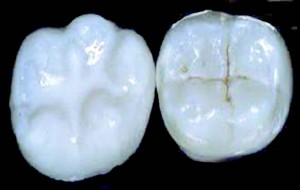 Dental sealants are a dental procedure to help prevent tooth decay. On their biting surfaces teeth have pits and grooves that have a higher chance of getting tooth decay. Food and bacteria get stuck in these areas and it is hard to remove.
Dental sealants are a dental procedure to help prevent tooth decay. On their biting surfaces teeth have pits and grooves that have a higher chance of getting tooth decay. Food and bacteria get stuck in these areas and it is hard to remove. 
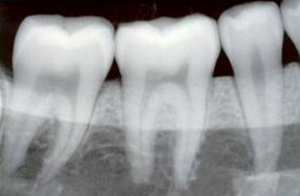 Dental X-rays are images of your teeth that your dentist uses to evaluate your oral health. These X-rays are used with low levels of radiation to capture images of the interior of your teeth and gums. This can help your dentist to identify problems, like cavities, tooth decay, and impacted teeth. Dental X-rays may seem complex, but they’re actually very common tools that are just as important as your teeth cleanings. Dental X-rays are typically performed yearly, or more often if your dentist is tracking the progress of a dental problem or treatment.
Dental X-rays are images of your teeth that your dentist uses to evaluate your oral health. These X-rays are used with low levels of radiation to capture images of the interior of your teeth and gums. This can help your dentist to identify problems, like cavities, tooth decay, and impacted teeth. Dental X-rays may seem complex, but they’re actually very common tools that are just as important as your teeth cleanings. Dental X-rays are typically performed yearly, or more often if your dentist is tracking the progress of a dental problem or treatment.
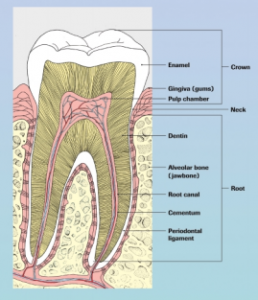 Root canal treatment is necessary when the pulp (soft tissue inside your teeth containing blood vessels, nerves and connective tissue) becomes inflamed or diseased. During root canal treatment, your dentist or endodontist (a dentist who specializes in treating the insides of teeth) removes the diseased pulp. The pulp chamber and root canal(s) of the tooth are then cleaned and sealed. If the infected pulp is not removed, pain and swelling can result, and your tooth may have to be removed.
Root canal treatment is necessary when the pulp (soft tissue inside your teeth containing blood vessels, nerves and connective tissue) becomes inflamed or diseased. During root canal treatment, your dentist or endodontist (a dentist who specializes in treating the insides of teeth) removes the diseased pulp. The pulp chamber and root canal(s) of the tooth are then cleaned and sealed. If the infected pulp is not removed, pain and swelling can result, and your tooth may have to be removed.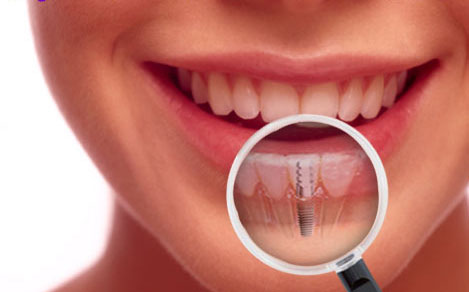
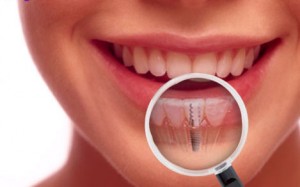 If you are self-conscious because you have missing teeth, wear dentures that are uncomfortable or don’t want to have good tooth structure removed to make a bridge, talk to your dentist to see if dental implants are an option for you.
If you are self-conscious because you have missing teeth, wear dentures that are uncomfortable or don’t want to have good tooth structure removed to make a bridge, talk to your dentist to see if dental implants are an option for you.